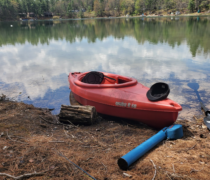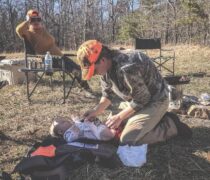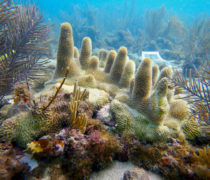Rocky Mountain Region: 2017 In Review
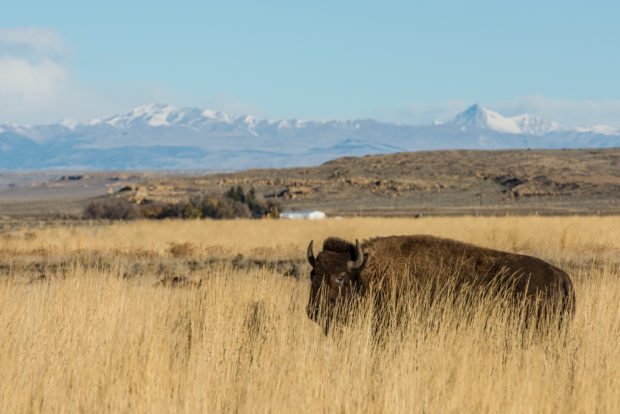
At the National Wildlife Federation we strive to unite all Americans to ensure wildlife thrive in a rapidly changing world. This means we have the distinct pleasure of connecting people from all walks of life — sportsmen and women, backyard gardeners, weekend birders, or just people with a desire to to protect the splendor that is the West. That’s what makes the National Wildlife Federation both unique and effective — our ability to unite people. Together, we are ensuring that our Western wildlife heritage remains intact for future generations to enjoy.
I am happy to share our collective accomplishments, as well as an overview of key issues we’ve been focusing on this year.

Bison photo by Alexis Bonogofsky
Tribal Lands: Restoring an Icon
Building on the success of last year’s bison release, a second herd of ten genetically pure bison from the National Bison Range in Montana joined eleven others on the Wind River Reservation in Wyoming. The return of bison to the Reservation is the culmination of more than 40 years of collaboration between the National Wildlife Federation’s Tribal Partnership Program, the U.S. Fish and Wildlife Service, and the Eastern Shoshone Tribe.
The reintroduction of these animals is a crucial step toward restoring wild bison to the Western landscape and to a people. And calves, like the one born on Wind River last May, are a testament to the progress of the program that envisions thousands of bison on hundreds of thousands of acres.
Learn more about our work with tribal lands, tribal partners, and bison: www.nwf.org/TribalBison
Early Childhood Health Outdoors (ECHO): Building a Conservation Ethic
Creating outdoor spaces that capture kids’ imagination and connect them with nature, keeping them active and outdoors in every season is just part of the work of the Early Childhood Health Outdoors team. Their efforts grow out of a recognition that healthy habits start early and connecting kids with nature benefits them emotionally, intellectually, and physically.
ECHO is a partnership between the National Wildlife Federation, Qualistar Colorado, and the Natural Learning Initiative at North Carolina State University. Borne out of a decade of research from the Natural Learning Initiative, ECHO will award $355,00 in grants over the next three years to naturalize play spaces across Colorado.
This year, in addition to launching the program and providing two seeds grants, ECHO also held its first symposium, “Creating Healthy Places for Children” at the Denver Botanic Garden. This inaugural event had a substantial waiting list, highlighting the receptiveness of child care providers in embracing this powerful program and its goal of ensuring that all young children in Colorado have daily access to quality outdoor learning environments.
Discover more about the program and the application process: www.nwf.org/ECHO
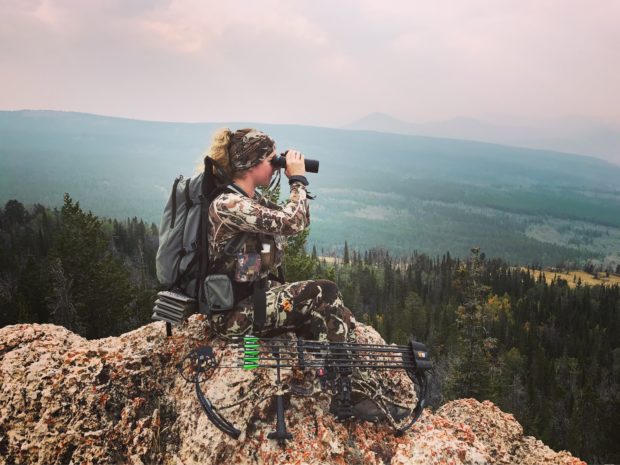
Photo of hunter by Jessi Johnson
ARTEMIS: Connecting and Giving Voice to Bold Sportswomen
Artemis is the goddess of the wilderness, the hunt, and wild animals. She is also the inspiration for Artemis Sportswomen, a group that’s ready to change the face of conservation.
Despite representing a quarter of all anglers and more than 20% of all hunters, women, the fastest growing segment in the sporting community, are rarely seen as leaders in sporting conservation efforts despite research that demonstrates that conservation thrives when women are involved.
Artemis is creating a unique and powerful voice in the conservation community. Artemis supporters have weighed in on protecting sage-grouse habitat, from the opinion pages in Idaho, to Facebook live events, to highlighting detailed maps showing that what’s good for the bird is good for the herd. Supporters have also organized events inviting women into the sporting tradition.
Connect with Artemis Sportswomen on Facebook: https://www.facebook.com/ArtemisSportswomen/
Protecting and Connecting Landscapes
Protecting Sage Grouse
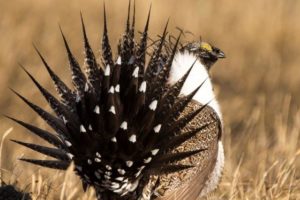
Greater sage-grouse photo by Greg Bergquist
The National Wildlife Federation has been working to help protect the sage grouse and the hundreds of plant and wildlife species that live in the sagebrush ecosystem. Efforts to save the greater sage-grouse were declared one of the most collaborative and significant conservation efforts in American history. However, an order by Interior Secretary Ryan Zinke to review and perhaps significantly alter the greater sage-grouse conservation plans runs the risk of derailing this long-term effort.
In response, the National Wildlife Federation mobilized a diverse group of stakeholders from across the West to draw attention to the issue. Newly formed coalition, Artemis, released a report, “Living on Common Ground – Sportswomen speak out to save the mule deer, sage-grouse and sagebrush country” and, in conjunction with the National Wildlife Federation, continues reaching out to hunters, local communities, and other wildlife proponents to advocate on behalf of the bird.
Connecting Landscapes in the Upper Rio Grande Valley
In the Upper Rio Grande Valley of southern Colorado and northern New Mexico, the National Wildlife Federation is partnering with our state affiliates and pursuing protection of wildlife connectivity that spans state and agency boundaries. We have brought stakeholders together from across the region to highlight the importance of connectivity for both the wildlife and the local communities.
Safeguarding a Promise and Our National Treasures
In late April, the Trump Administration issued an Executive Order to “review” national monuments established in the last 21 years, despite the President’s campaign promises to fulfill the legacy of Theodore Roosevelt. The review targeted Utah’s Grand Staircase Escalante and 26 other monuments, putting them at risk of being shrunk, eliminated, or developed.
The President will decide whether to accept Interior Secretary Ryan Zinke’s recommendations to shrink the Utah monuments and change the management of others. If he does, legal challenges are expected. The National Wildlife Federation is an impassioned voice for conserving these treasures, coordinating efforts from a variety of sources and providing information to the public about these and other threats to our public lands.
Upholding the Methane Rule

Desert bighorn sheep photo by Jon Avery (USFWS)
Thanks to common-sense federal regulations to control methane emissions from oil and gas production enacted at the end of the Obama administration by the Bureau of Land Management (BLM) and Environmental Protection Agency, our region has been making progress on reining in air pollution that significantly contributes to climate change and endangers human health and wildlife. The National Wildlife Federation and our partners successfully fended off a BLM methane rule repeal effort and are now working to make sure that both federal agencies keep the safeguards intact.
Visit ourpubliclands.org to learn what you can do.
The post Rocky Mountain Region: 2017 In Review appeared first on The National Wildlife Federation Blog.
Source: NWF Blog



